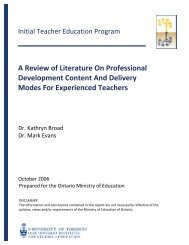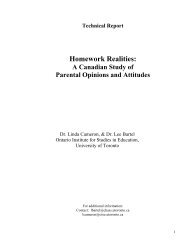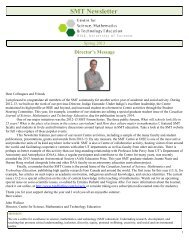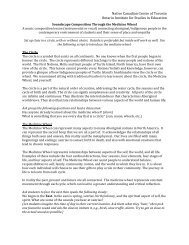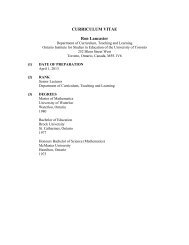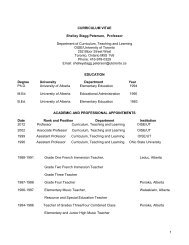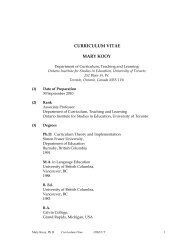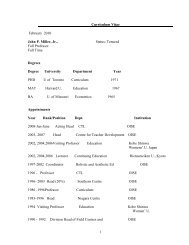The Ontario Curriculum, Grades 9-12 - Ministère de l'éducation ...
The Ontario Curriculum, Grades 9-12 - Ministère de l'éducation ...
The Ontario Curriculum, Grades 9-12 - Ministère de l'éducation ...
You also want an ePaper? Increase the reach of your titles
YUMPU automatically turns print PDFs into web optimized ePapers that Google loves.
D1.4 outline strategies to reduce, reuse, and recycle construction materials, and i<strong>de</strong>ntify methods<br />
for implementing sustainable building practices (e.g., work with a community partner or<br />
government agency, help <strong>de</strong>velop local programs, create a public awareness campaign)<br />
D1.5 research and <strong>de</strong>scribe strategies for implementing sustainable building practices (e.g.,<br />
Canada Green Building Council gui<strong>de</strong>lines, Forest Stewardship Council Canada standards)<br />
D2. Technology and Society<br />
D2.1 research and assess the economic and social effects of the construction industry (e.g.,<br />
creation of primary and secondary jobs, transport of materials, land use, resource<br />
management, encroachment on Aboriginal lands)<br />
D2.2 <strong>de</strong>scribe the factors affecting the quality of life of the occupants of resi<strong>de</strong>ntial and/or light<br />
commercial buildings (e.g., air quality, allergens, carcinogens, aesthetics, access to<br />
transit and other services)<br />
D2.4 i<strong>de</strong>ntify factors to consi<strong>de</strong>r in community planning (e.g., population <strong>de</strong>nsity,<br />
ecology, culture)<br />
Construction Technology, Gra<strong>de</strong> <strong>12</strong>, Workplace Preparation<br />
(TCJ4E)<br />
B. Design, Layout, and Planning Skills<br />
B4. Building Skills<br />
B4.1 i<strong>de</strong>ntify and <strong>de</strong>scribe the factors that affect the <strong>de</strong>sign and installation of foundations for<br />
construction projects (e.g., drainage, soil conditions, frost penetration, …)<br />
D. Technology, the Environment, and Society<br />
D1. Technology and the Environment<br />
D1. <strong>de</strong>monstrate an un<strong>de</strong>rstanding of the environmental effects of construction projects, and<br />
ways of reducing harmful effects<br />
D1.1 assess environmentally friendly alternatives for building systems (e.g., heating with solar<br />
energy, heat pumps, or geothermal systems; reusing grey water; harvesting rainwater;<br />
chlorine-free treatment of storm water and sewage)<br />
D1.2 assess the environmental and health effects of using manufactured construction<br />
materials (e.g., pressure-treated wood, oriented-strand board, medium-<strong>de</strong>nsity<br />
fibreboard, cultured stone)<br />
D1.3 compare ways of reducing and/or managing energy consumption in homes and<br />
businesses (e.g., smart meters, timers, skylights, heat recovery, energy-efficient lighting)<br />
D1.4 research and <strong>de</strong>scribe strategies for implementing sustainable building practices (e.g.,<br />
Canada Green Building Council gui<strong>de</strong>lines, Forest Stewardship Council Canada standards)<br />
D2. Technology and Society<br />
D2.1 i<strong>de</strong>ntify the economic and social effects of the construction industry (e.g., waste disposal,<br />
land use, labour supply and cost, water supply, local infrastructure)<br />
Technological Education 183



